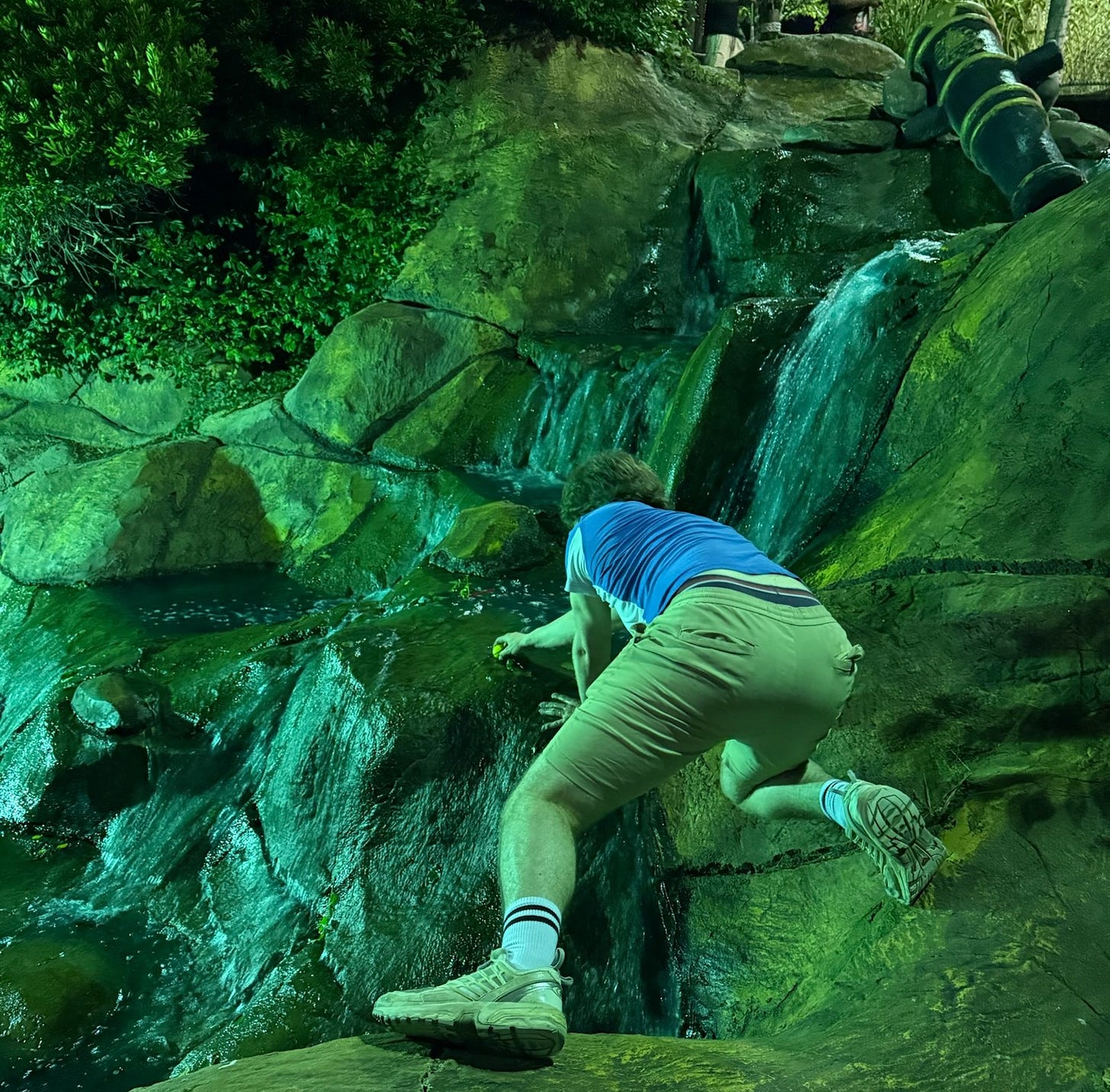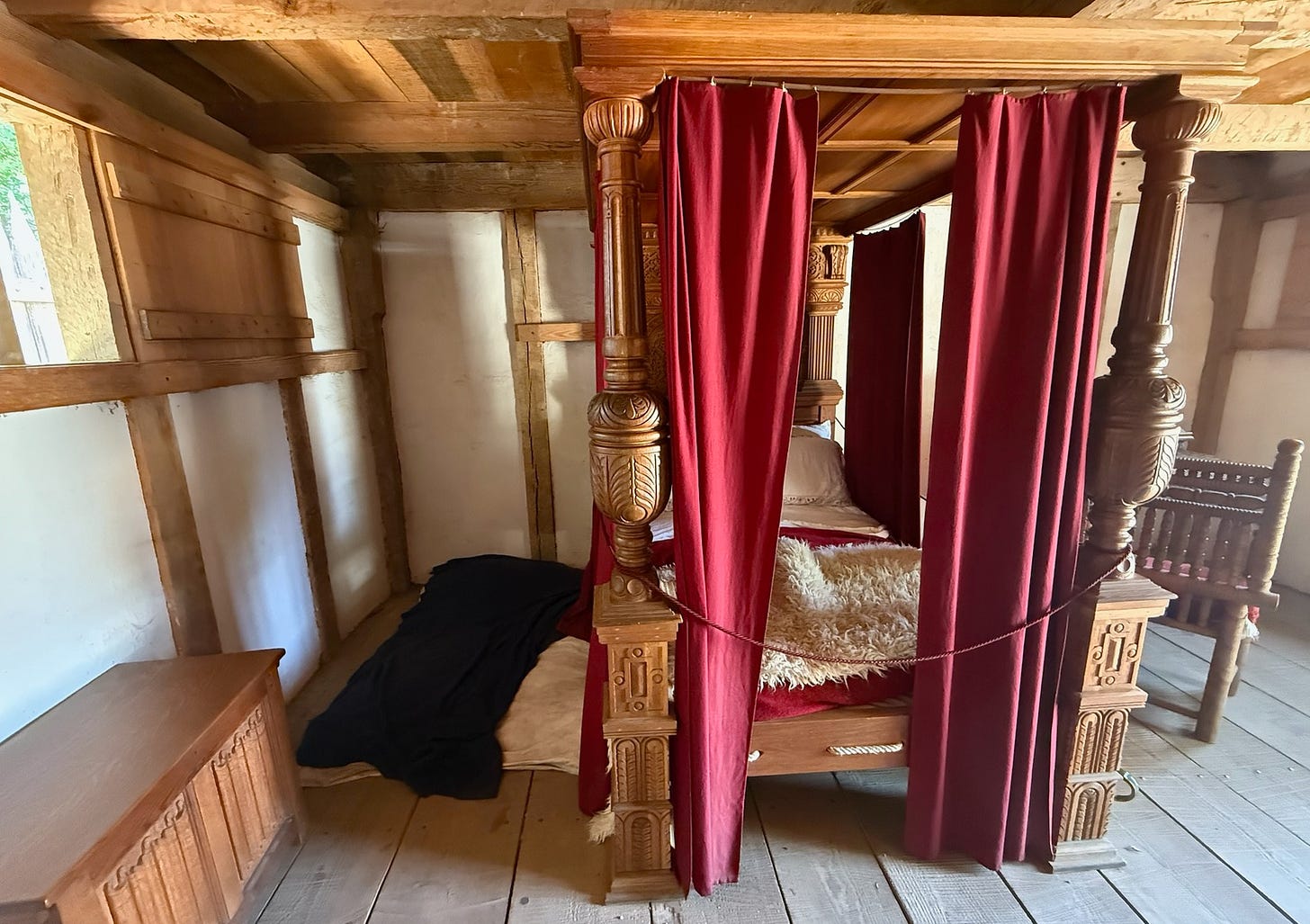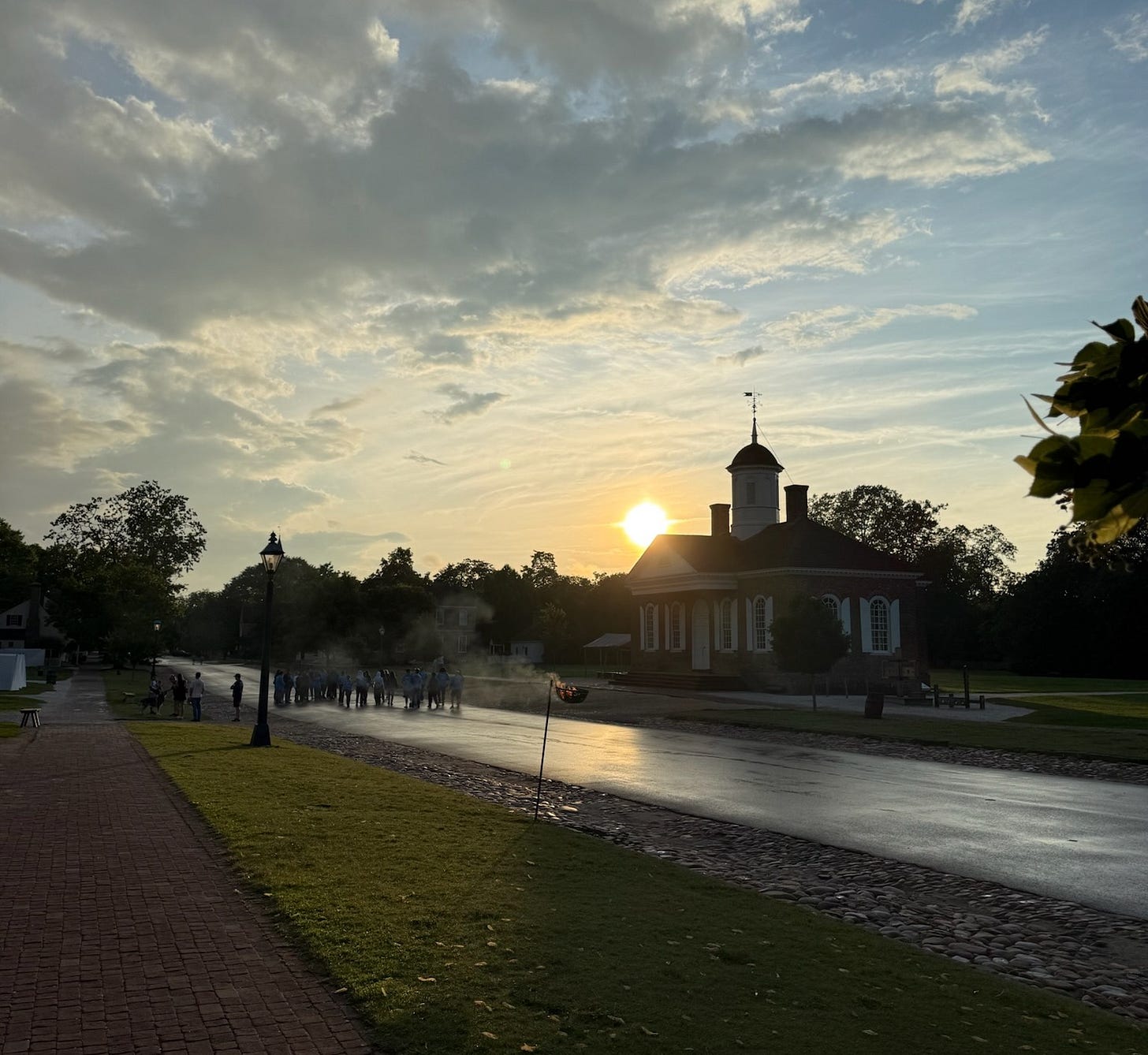The road trip was officially beginning, I had my own pair of keys to Clara’s car, and we began our long drive to stay with Clara’s mum’s good friend from college. On our way, we stopped at a Cracker Barrel, and I was immediately handed a strange pyramid of pegs in holes. I am given to understand that this is a tradition of the Barrel of Crackers, and one must remove all the pegs but one by jumping them — not dissimilar in method to the game of checkers. I took charge of the game, and handily defeated its contrivances in my first attempt.
This was the first of my many conquests in the road to understanding the cultures of the United States.
Upon being welcomed by our host in Williamsburg, we dropped our bags and set off in search of things to do. Those of you who are students at St Andrews might be aware that this town is home to a school with which we have an exchange program: William & Mary. Clara and I took this opportunity to assess the verdancy of the other side’s grass. My lasting memory of our long walk around the campus was that it was pretty, but particularly that each building had a great green sign outside, showing its name. You may think ‘not particularly unusual’, but whilst walking we realised that every building we passed - even seemingly residential houses - seemed to be similarly signed.
Surely not every building is university affiliated? Who could possibly need a 2x2m sign to direct them to “corner house”? It was on the corner!
Mystery unsolved, we continued walking past puzzlingly demarcated homes, settled into a nice bar for a drink, and finally drove up to a locally owned Italian restaurant, made famous for their lentil soup. It was quite delicious. Our final activity of the day was a friendly round of crazy golf on a pirate-themed course. After taking it easy on my tired chauffeur in round 1, I realised I had to up my game for the second round, beating Clara by 15 points. There may be rumours that my ball was lost in a waterfall, but these are unfounded and I deny them unequivocally.
I settled, victorious, into my floor-bed, door closed to ward off our host’s particularly friendly and slightly smelly dog, and passed out.
The next day, we had decided on a great number of activities, as we were in the ‘Historic Triangle’ of the United States. This meant bright and early driving over to Jamestown to see the very first colony. Initially, we stopped at a rather delightful and well-established museum and re-enactment centre which only very slightly swindled us. Perhaps my wording is too harsh, but whilst it was cool to see the blacksmithing re-enacted, and the museum told the story of Jamestown in great depth, it was slowly apparent that we were not actually yet in the town itself. Indeed, we had stopped slightly short of the historic settlement, assuming that the ‘Jamestown visitor centre’ would not lead us astray, and we were in fact 10 minutes down the road.
Driving on over open water after our charming and strangely duplicitous museum experience, we reached the real archaeological site, and forked out slightly more cash for the privilege of seeing the real thing. As with Gettysburg, this period of history in British education is rather glossed over. I seem to remember a brief discussion of our having lost a colony, before lots of time spent on the Industrial Revolution and the sudden appearance of a new important ally when the curriculum reached World War One. Being in the actual colony, seeing active excavations of ruined buildings and the skull of a 14 year old girl victimised by starving settlers was striking, and I left with a greater understanding of the roots of one of my nationalities.
It must also be credited that these museums do a reasonably good job of acknowledging the atrocities committed by the settlers and their repeated betrayals of the indigenous peoples — another delicate part of history (and indeed modernity) which I implicitly understand as existing, and which was made all the more impactful by that material culture presented in Jamestown
The next stop was colonial Williamsburg itself, and this was a complete and utter joy from start to finish. Clara and I walked along this road lined with ‘old timey’ houses (though many bore striking resemblance to my neighbourhood back home), and stopped in to witness many costumed individuals engaged in tasks. This work varied, printing, shoemaking, weaving, and even bookbinding. These people were not only actors, but also incredibly knowledgeable about the jobs they were performing, happy to answer my stupid questions, and did a good job capturing the rooms of people watching them work.
However, I was a Brit in pre-revolutionary America, and this was not without issue.
As we entered one building, it was immediately apparent we were joining an in-character tour of this old pub. As the story was established, it was clear that my presence was rather silly. You see, Colonial Williamsburg is frozen in a perpetual 1775, specifically on the day after Virginia’s Colonial Governor, John Murray, fled the town due to rising tensions. As such, the characters had much to say regarding such foolishness as the ‘promise of freedom from the crown’ and ‘life and liberty’, and you can bet I felt Clara side-eyeing me when they said ‘I do not know if any royalists remain in the town’. I decided to keep my mouth shut, the scene was not there to be derailed by my pretending to be some British soldier, and there was a deeply annoying woman in the group who kept trying to join in too hard — I refused to become her. However, right at the end I did tell the Patrick Henry re-enactor in my best RP ‘I’m watching you’.
Our final stop, after a nice relaxing meal in a nearby pub (which served lots of British fare, none of which I felt enthusiastic enough to order), was a ghost tour. I was so excited. My first experience of St Andrews was a ghost tour, which my family booked in preference to the University tour because it seemed more fun. We were taken by lantern light across the town into three different buildings, and told many fun stories in each, some tied directly to these rooms, and some about Williamsburg more generally. My favourite element of these was our guide’s inclusion of motive to each ghost she described. Most moving was the sound of a baby crying, which was said to be the ghost of an enslaved woman’s child who died shortly after she was purchased, and for whose life the owner received £10 compensation whilst the mother was uncomforted. Both a haunting and historically informative experience to close out our time in Williamsburg.
For my music recommendation this time, I have decided on a song from Virginia-born artist Car Seat Headrest’s delightful new album The Scholars. For those who seek another angle, there are also the works of Ella Fitzgerald, Pharrell Williams, and Lucy Dacus (with some Missy Elliott and D’Angelo also).
P.S. Writing this from the future, I have decided to cancel the Confederate flag count. It would seem that even our recent drive through Alabama did not yield any to add to Maryland’s count of 3. This is perhaps because we were in rural areas of Maryland, rather than the highway, but I choose to believe that Maryland is simply the most reprehensible of all the states.
Clara’s Corner:
Dylan covered a lot of this one, so instead of being informational, I’ll tell a short tale of terror:
Upon entering a reconstructed settler building in Jamestown, we were confronted by a large black snake resting it’s head on a reconstructed pillow. Needless to say, I jumped. After deciding to be brave and engage in socialization to tell an attendant about the intruder, I was told ‘Oh, yeah. They live in the rafters.’ WHAT DO YOU MEAN THEY LIVE IN THE RAFTERS?!?!?
Apparently Jamestown is next to a protected conservation area and they can’t legally do anything about the snakes. So. Be warned, Jamestown travellers.
AHHHHHHHHH
By Clara Curtis
Movement on the bed,
Sleek scales and a viper head,
THEY’RE IN THE RAFTERS???
- The Yank








I wonder what the dog wrote about you in its Substack?
Dad asked a great question. I await your reply.